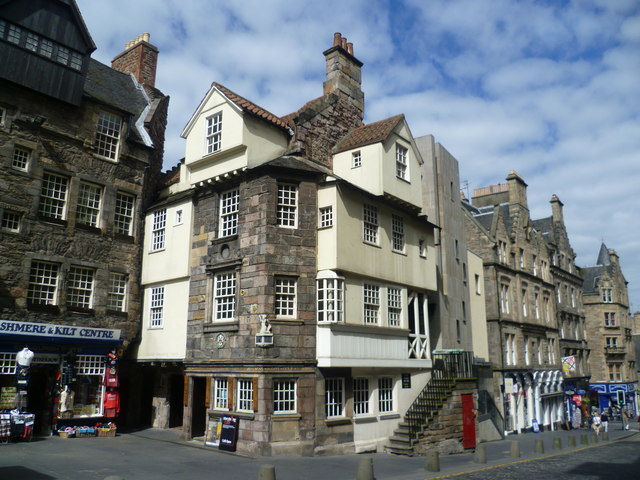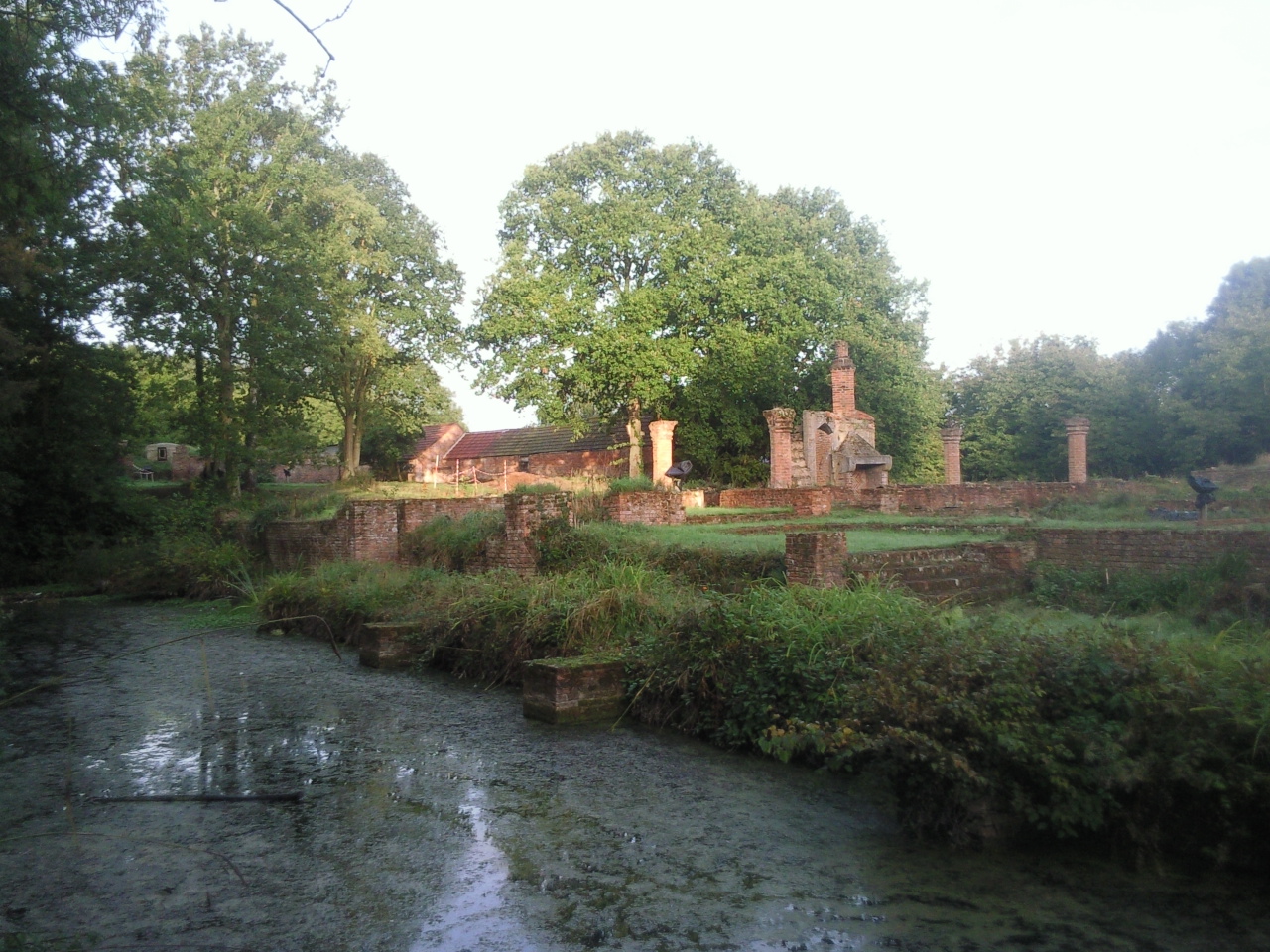|
James Mosman
James Mosman or Mossman (died 1573) was a Scottish goldsmith. He was a son of John Mosman, a goldsmith working in Edinburgh. It has been suggested that the Mosman family was of Jewish origin. He married Mariota Arres, and secondly in 1571, Janet King. Mosman and Arres rebuilt the John Knox House on the High Street in Edinburgh. Moubray House is adjacent to the west. Mosman and Arres were given permission in May 1557 by Mary of Guise to extend the cellars of another house they owned under the High Street. This house was on the south side of the Royal Mile between houses belonging to Alan Dickson and Richard Hoppar. On 16 December 1558 he weighed and valued the treasures of St Giles' Kirk including the reliquary of Saint Giles' arm bone. James Mosman and his workshop made gold chains for Mary, Queen of Scots to give as diplomatic gifts. In April 1566 he sold the queen rings and other pieces which were probably intended as presents to her attendants. He was an assay master i ... [...More Info...] [...Related Items...] OR: [Wikipedia] [Google] [Baidu] |
John Knox's House - Geograph
John is a common English name and surname: * John (given name) * John (surname) John may also refer to: New Testament Works * Gospel of John, a title often shortened to John * First Epistle of John, often shortened to 1 John * Second Epistle of John, often shortened to 2 John * Third Epistle of John, often shortened to 3 John People * John the Baptist (died c. AD 30), regarded as a prophet and the forerunner of Jesus Christ * John the Apostle (lived c. AD 30), one of the twelve apostles of Jesus * John the Evangelist, assigned author of the Fourth Gospel, once identified with the Apostle * John of Patmos, also known as John the Divine or John the Revelator, the author of the Book of Revelation, once identified with the Apostle * John the Presbyter, a figure either identified with or distinguished from the Apostle, the Evangelist and John of Patmos Other people with the given name Religious figures * John, father of Andrew the Apostle and Saint Peter * Pope John ... [...More Info...] [...Related Items...] OR: [Wikipedia] [Google] [Baidu] |
Robert Melville, 1st Lord Melville
Robert Melville, 1st Lord Melville (c. 1527–1621) was a Scottish diplomat, administrator, jurist, and intriguer, and uncle of the poet Elizabeth Melville. Family Known as Sir Robert Melville of Murdocairnie or Murdochcairnie, Robert was the second son of Sir John Melville of Raith in Fife and Helen Napier of Merchiston. His younger brother Sir James Melville of Halhill wrote a famous political memoir. Another brother, Andrew Melville of Garvock, joined the household of Mary, Queen of Scots in Scotland. Robert married firstly; Katherine Adamson; secondly Mary Leslie, daughter of Andrew Leslie, Earl of Rothes; thirdly, Jean Stewart, daughter of Robert Stewart, Earl of Orkney. His heir was his son with Katherine Adamson, Robert Melville, 2nd Lord Melville. Career During the Scottish Reformation, Robert Melville sided with the Protestant Lords of the Congregation. He was sent to England as a diplomat by Mary, Queen of Scots. He opposed her marriage to Henry, Lord Darnley and jo ... [...More Info...] [...Related Items...] OR: [Wikipedia] [Google] [Baidu] |
Bertrand De Salignac De La Mothe-Fénelon
Bertrand de Salignac de la Mothe-Fénelon (1523-1589) was French diplomat who served as ambassador to Elizabeth I in England and to James VI in Scotland. Mothe-Fénelon and Mary, Queen of Scots Mothe-Fénelon was secretary to the French ambassador Gilles de Noailles during the crisis of the Scottish Reformation in 1560. After serving in the army he was sent ambassador to England in 1568. At the request of Charles IX of France he endeavoured to excuse to Elizabeth the St. Bartholomew's Day massacre as a necessity caused by a plot which had been laid against the life of the king. While in England, Mothe-Fénelon corresponded with Mary, Queen of Scots on political matters. He also bought textiles and sewing matereials for her, and advised on potential gifts for Elizabeth. In 1574 Mary, Queen of Scots embroidered an incarnate satin skirt with silver thread using materials bought in London by Mothe-Fénelon. She soon wrote for more incarnate silk thread, better quality thinner silver t ... [...More Info...] [...Related Items...] OR: [Wikipedia] [Google] [Baidu] |
Francis Walsingham
Sir Francis Walsingham ( – 6 April 1590) was principal secretary to Queen Elizabeth I of England from 20 December 1573 until his death and is popularly remembered as her "spymaster". Born to a well-connected family of gentry, Walsingham attended Cambridge University and travelled in continental Europe before embarking on a career in law at the age of twenty. A committed Protestant, during the reign of the Catholic Queen Mary I of England he joined other expatriates in exile in Switzerland and northern Italy until Mary's death and the accession of her Protestant half-sister, Elizabeth. Walsingham rose from relative obscurity to become one of the small coterie who directed the Elizabethan state, overseeing foreign, domestic and religious policy. He served as English ambassador to France in the early 1570s and witnessed the St. Bartholomew's Day massacre. As principal secretary, he supported exploration, colonization, the use of England's maritime strength and the ... [...More Info...] [...Related Items...] OR: [Wikipedia] [Google] [Baidu] |
Michel De Castelnau
Michel de Castelnau, Sieur de la Mauvissière (c. 1520–1592), French soldier and diplomat, ambassador to Queen Elizabeth. His memoirs, covering the period between 1559 and 1570, are considered a more reliable source for the period than many others. Life He was born in La Mauvissière (now part of Neuvy-le-Roi, Indre-et-Loire), Touraine about 1520. He was one of a large family of children, and his grandfather, Pierre de Castelnau, was Equerry (Master of the Horse) to Louis XII. Endowed with a clear and penetrating intellect and remarkable strength of memory, he received a careful education, capped off with travels in Italy and a long stay at Rome. He then spent some time in Malta and afterwards entered the army. His first acquaintance with war was in the campaigns of the French in Italy. His abilities and his courage won him the friendship and protection of the Charles, Cardinal of Lorraine, who took him into his service. In 1557 a command in the navy was given to him, and ... [...More Info...] [...Related Items...] OR: [Wikipedia] [Google] [Baidu] |
William Fowler (makar) William Fowler (c. 1560–1612) was a Scottish poet or makar (royal bard), writer, courtier, and tra |


